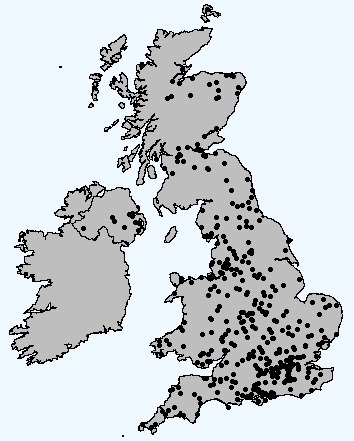Dear Beekeepers,
I cannot believe I am sending a May update already - where is this year going?! Welcome to our new subscribers. This newsletter now has 3,300 subscribers since NHMS began in 2018 and we thank you all for your continued interest in, and support for, the scheme.
I hope you are all having more luck with your hives than I am! I had two weak hives coming out of winter that are very gradually building themselves up and a mega hive that is already queen-less. My husband and I started beekeeping the same year as NHMS began and every year has been a learning curve!
There are 3 main messages for this month's newsletter:
Pollen analysis on 2022 samples - update
There are ~1,200 honey samples from 2022 that are in the process of being analysed for their pollen content. This equates to 12 DNA plates - one sequencing run is made up of 4 DNA plates, so we are looking at 3 sequencing runs. At present, we have 4 DNA plates ready for go for the first sequencing run. This is the most expensive step in the analysis pipeline, and is the first sequencing run I've prepared since taking over NHMS, so fingers crossed for me please! (If none of this is making sense to you, please check out our YouTube video for an explanation of what happens behind-the-scenes at NHMS!).
Sample pack requests for 2023
We have so far received 446 sample pack requests this year - thank you for your enthusiasm! Please see the map below for the locations these requests have come from:

As you can see, we have already achieved an impressive coverage of the UK! If you know any beekeepers with hives in the gaps (notably central Wales, the North-East and Scotland) who might like to participate in NHMS, please direct them to our website.
Collecting straight from the hive
I had hoped to have recorded a video of me collecting honey straight from a hive in time for this year's sample collection, but my hives have other ideas! A reminder please to scoop the honey directly from the comb, as we will no longer be doing pollen analysis on extracted honey samples. This is because the aim of NHMS - which is foremost a scientific study - is to capture a "snapshot in time" from a single hive of what honeybees have been feeding on. Extracted honey is more likely to be a combination of different hives and collection times, and is more likely to fail the analysis pipeline because it has already been filtered. Don't worry about trying not to collect wax - it only takes seconds for us to remove wax from the sample and it reassures us that the sample is from the comb. Also please let us know if your sample is collected from a flow hive, as it is eligible for pollen analysis (but looks to us like extracted honey!).
That's it from us for now. The NHMS team are always happy to give talks to beekeeping associations and schools so please get in touch if this is something you are interested in.
Best wishes,
Jenny
On behalf of the NHMS team
